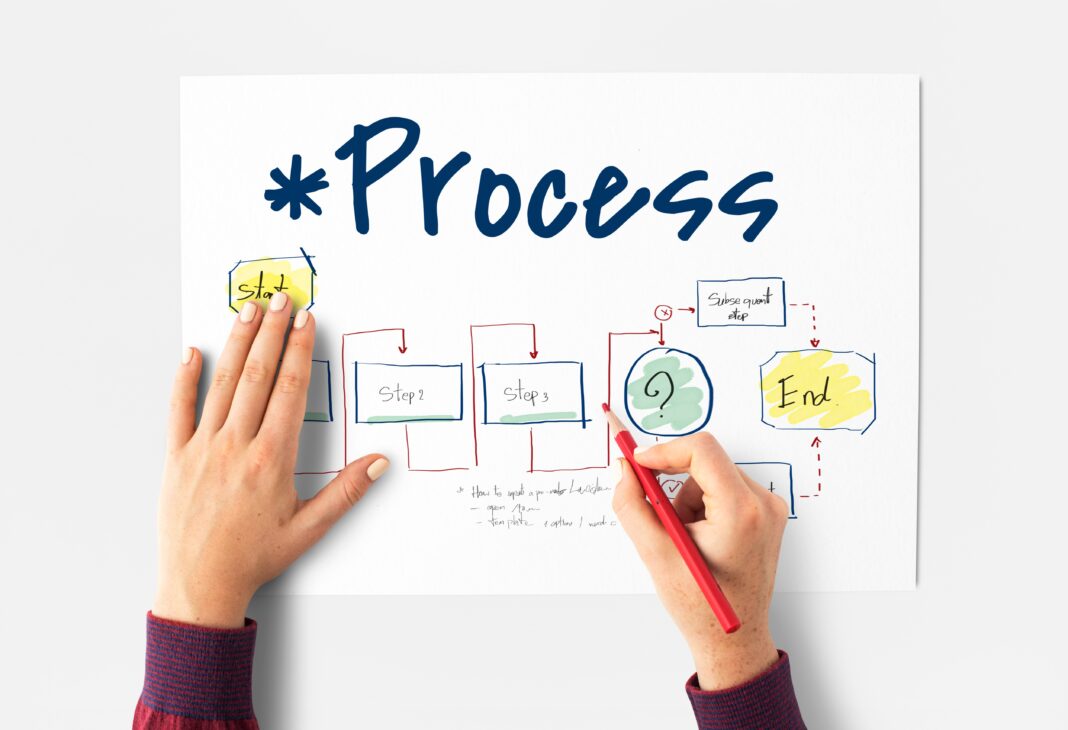Introduction: The Critical Importance of Framework Selection
Choosing the right software framework is one of the most consequential technical decisions your development team will make. This choice impacts everything from initial development speed to long-term maintenance costs, from system performance to your ability to hire qualified developers. Unlike many technical decisions that can be reversed or refactored later, your framework choice often becomes deeply embedded in your architecture, making changes later extremely costly and time-consuming.

The software development landscape offers an overwhelming array of framework options, each with its own strengths, weaknesses, and ideal use cases. Frontend frameworks like React, Angular, and Vue.js dominate web development discussions, while backend options range from full-stack solutions like Django and Ruby on Rails to more modular approaches like Express.js. Mobile development brings its own set of considerations with Flutter and React Native competing for attention.
This comprehensive guide will walk you through every aspect of framework selection, providing you with a structured decision-making process that considers all critical factors. We’ll examine technical considerations, team dynamics, business requirements, and long-term maintenance implications. By the end, you’ll have a clear methodology for evaluating frameworks and selecting the best option for your specific project needs.
Section 1: Understanding Software Frameworks and Their Role in Development
1.1 What Exactly Is a Software Framework?
A software framework is much more than just a collection of libraries or tools. It’s a foundational structure that provides both constraints and capabilities for building applications. Frameworks establish conventions, design patterns, and architectural approaches that shape how developers write and organize code. Unlike libraries that you call from your code, frameworks call your code according to their established patterns.
Modern frameworks typically include:
- Core libraries for fundamental operations
- Standardized project structures
- Built-in security features
- Database integration tools
- Testing utilities
- Development servers and tooling
- Documentation and community resources
The framework you choose becomes the DNA of your application, influencing everything from how you handle HTTP requests to how you structure your database models. This is why framework selection deserves careful consideration rather than defaulting to the most popular or familiar option.
1.2 The Evolution of Software Frameworks: From Helper Tools to Architectural Foundations
The concept of frameworks has evolved significantly since the early days of software development. In the 1990s, most web applications were built from scratch using basic programming languages. Developers manually handled every aspect of HTTP requests, database connections, and template rendering. This approach led to inconsistent code quality, security vulnerabilities, and massive duplication of effort.
The early 2000s saw the rise of foundational frameworks like Ruby on Rails (2004) and Django (2005), which introduced revolutionary concepts like convention over configuration and the model-view-controller (MVC) pattern. These frameworks demonstrated how standardized approaches could dramatically increase developer productivity while improving code quality.
Today’s frameworks have grown even more sophisticated, offering:
- Built-in support for modern development practices (like test-driven development)
- Cloud-native deployment capabilities
- Microservices architecture support
- Real-time functionality out of the box
- Progressive web app features
- Machine learning integration
Understanding this evolution helps explain why frameworks are now considered essential rather than optional in professional software development.
1.3 Framework vs. Library: Understanding the Critical Difference
Many developers confuse frameworks with libraries, but the distinction is crucial for making informed architectural decisions:
Libraries:
- Are collections of reusable functions/classes
- Follow the “call and return” model (your code calls library functions)
- Focus on solving specific problems (e.g., date manipulation, HTTP requests)
- Can be mixed and matched freely
- Examples: jQuery, Lodash, Requests (Python)
Frameworks:
- Provide complete application structures
- Follow the “Hollywood principle” (“Don’t call us, we’ll call you”)
- Dictate application architecture and flow
- Typically require commitment to their entire ecosystem
- Examples: Angular, Django, Spring Boot
This distinction matters because while you can easily swap out libraries, changing frameworks often requires significant architectural changes. The inversion of control in frameworks means your code must conform to the framework’s patterns rather than the other way around.
Section 2: Comprehensive Framework Evaluation Criteria
2.1 Project Requirements Analysis
Before evaluating specific frameworks, you must thoroughly understand your project’s requirements. This analysis should cover:
Technical Requirements:
- Application type (web, mobile, desktop, IoT)
- Expected traffic volume and scaling needs
- Performance characteristics (response time requirements)
- Integration needs (third-party APIs, legacy systems)
- Data complexity and relationships
- Real-time functionality requirements
- Offline capability needs
- Internationalization/localization requirements
Business Requirements:
- Time-to-market constraints
- Budget limitations
- Team size and composition
- Maintenance expectations
- Future roadmap and feature plans
- Compliance and regulatory needs
User Experience Requirements:
- Frontend complexity
- Animation and interactivity needs
- Accessibility standards
- Cross-platform consistency
- Progressive enhancement strategy
Creating a weighted scoring system for these requirements will help objectively compare frameworks later in the evaluation process.
2.2 Technical Considerations
Performance Characteristics:
- Benchmark comparisons for common operations
- Memory usage patterns
- Startup and initialization time
- Concurrency model and threading approach
- Garbage collection behavior
- Ahead-of-time vs. just-in-time compilation
Scalability:
- Horizontal scaling capabilities
- State management approaches
- Database connection pooling
- Caching strategies
- Background job processing
- Microservices readiness
Security Features:
- Built-in protections (CSRF, XSS, SQL injection)
- Authentication/authorization frameworks
- Security header support
- Data validation and sanitization
- Secure defaults configuration
- Security update frequency
Architecture Compatibility:
- Monolithic vs. microservices support
- Serverless deployment options
- Containerization compatibility
- Cloud platform integrations
- API-first design support
- Modularity and plugin systems
2.3 Ecosystem and Community Factors
Maturity and Stability:
- Years in active development
- Release history and versioning approach
- Backward compatibility policies
- Corporate backing (if any)
- Adoption by major companies
- Roadmap visibility
Community Strength:
- Size of active developer community
- Quality and quantity of Stack Overflow discussions
- Meetup and conference presence
- Job market demand
- Learning resource availability
- Third-party module ecosystem
Documentation Quality:
- API reference completeness
- Tutorial and guide availability
- Example code quality
- Migration guide thoroughness
- Cookbook-style solutions
- Documentation searchability
2.4 Team and Organizational Factors
Developer Experience:
- Learning curve steepness
- Debugging tools quality
- Testing framework integration
- IDE support and plugins
- REPL and interactive development
- Error message clarity
Team Skills:
- Existing language proficiency
- Framework-specific experience
- Training resource availability
- Hiring market conditions
- Contractor availability
- Community support accessibility
Organizational Fit:
- Alignment with company tech stack
- Compliance with IT policies
- Licensing compatibility
- Vendor lock-in concerns
- Long-term maintenance implications
- Strategic technology alignment
Section 3: In-Depth Framework Comparisons
3.1 Frontend Framework Deep Dives
React:
- Virtual DOM implementation details
- Component lifecycle nuances
- State management options (Context, Redux, MobX)
- Server-side rendering capabilities
- Concurrent Mode implications
- React Native synergy
Angular:
- Dependency injection system
- Change detection strategies
- Module and lazy loading architecture
- RxJS integration depth
- Ahead-of-time compilation
- Angular Universal for SSR
Vue:
- Reactivity system internals
- Single-file component advantages
- Composition API vs. Options API
- Transition and animation system
- Vuex state management
- Nuxt.js framework integration
3.2 Backend Framework Analysis
Django:
- ORM capabilities and limitations
- Admin interface customization
- Class-based view system
- Middleware pipeline
- Django REST framework
- Channels for WebSockets
Ruby on Rails:
- Active Record pattern implementation
- Convention over configuration philosophy
- Asset pipeline evolution
- Active Job background processing
- API mode considerations
- Turbolinks implementation
Express.js:
- Middleware composition model
- Routing system flexibility
- Error handling approaches
- Performance optimization tips
- Cluster module integration
- Serverless deployment options
3.3 Full-Stack Framework Evaluation
Laravel:
- Eloquent ORM features
- Blade templating engine
- Artisan command-line tools
- Queue system implementations
- Laravel Echo for real-time
- Vapor serverless platform
Spring Boot:
- Auto-configuration magic
- Starter dependencies
- Actuator for monitoring
- Data JPA repositories
- Spring Security integration
- Reactive programming support
3.4 Mobile Framework Comparisons
Flutter:
- Widget composition model
- Skia rendering engine
- Platform channel mechanism
- State management solutions
- Hot reload implementation
- Desktop and web targets
React Native:
- Bridge architecture
- Native module development
- Hermes JavaScript engine
- Fabric architecture changes
- CodePush for updates
- New Architecture roadmap
Section 4: The Framework Selection Methodology
4.1 Requirement Weighting System
Develop a scoring matrix that assigns weights to each requirement category based on project priorities. For example:
- Performance (25%)
- Development Speed (20%)
- Team Skills (15%)
- Ecosystem (15%)
- Long-term Maintainability (10%)
- Security (10%)
- Scalability (5%)
4.2 Prototyping Approach
Create meaningful prototype evaluations that test:
- CRUD operations performance
- Authentication flow implementation
- Complex data relationships
- Third-party integration
- Error handling scenarios
- Deployment process
4.3 Decision Matrix Construction
Build a comparative table scoring each framework against weighted criteria. Include both quantitative metrics (benchmark results) and qualitative assessments (developer experience).
4.4 Risk Assessment
Evaluate potential risks associated with each framework:
- Learning curve impact on timeline
- Hiring challenges
- Performance bottlenecks
- Architectural limitations
- Community decline potential
- Vendor lock-in dangers
Section 5: Implementation and Beyond
5.1 Onboarding Strategies
- Structured learning paths
- Pair programming approaches
- Code review focus areas
- Style guide development
- Knowledge sharing systems
- Mentorship programs
5.2 Architecture Guardrails
- Module boundaries
- Testing strategy
- Documentation standards
- Performance monitoring
- Error tracking
- Deployment pipeline
5.3 Long-term Maintenance
- Dependency update process
- Breaking change management
- Security patch response
- Performance regression testing
- Technical debt tracking
- Framework upgrade planning
Section 6: Real-world Case Studies
6.1 Successful Implementations
- Large-scale React adoption at Facebook
- Airbnb’s Rails to React Native journey
- Netflix’s Spring Boot microservices
- Shopify’s Ruby on Rails scaling
- Alibaba’s Flutter implementation
6.2 Migration Case Studies
- Twitter’s frontend evolution
- LinkedIn’s mobile rewrite
- Uber’s monolith decomposition
- Pinterest’s infrastructure changes
- Discord’s performance optimizations
Section 7: Frequently Asked Questions
Q: How often should we reevaluate our framework choice?
A: Conduct annual architecture reviews, but consider major reevaluation only when facing significant limitations. Framework changes are costly, so they require strong justification.
Q: Can we use multiple frameworks in one project?
A: While possible through microservices or module federation, this increases complexity. Only pursue when clear benefits outweigh the maintenance overhead.
Q: How do we balance new technology with stability?
A: Adopt mature frameworks for core systems while experimenting with innovations in non-critical areas. Implement proof-of-concepts before committing.
Q: What metrics indicate we chose the wrong framework?
A: Watch for declining velocity, increasing bugs, performance bottlenecks, developer frustration, and difficulty hiring qualified engineers.
Q: How important is framework popularity in decision making?
A: While not the primary factor, popularity affects hiring, resources, and longevity. Balance innovation with pragmatism based on your risk tolerance.
Section 8: Conclusion and Actionable Next Steps
Selecting the right software framework requires balancing immediate needs with long-term considerations. By following the structured approach outlined in this guide—thorough requirements analysis, comprehensive evaluation criteria, meaningful prototyping, and risk assessment—you can make an informed decision that serves your project throughout its lifecycle.

